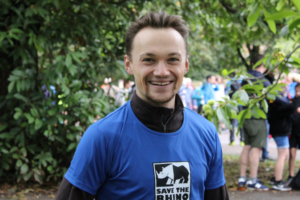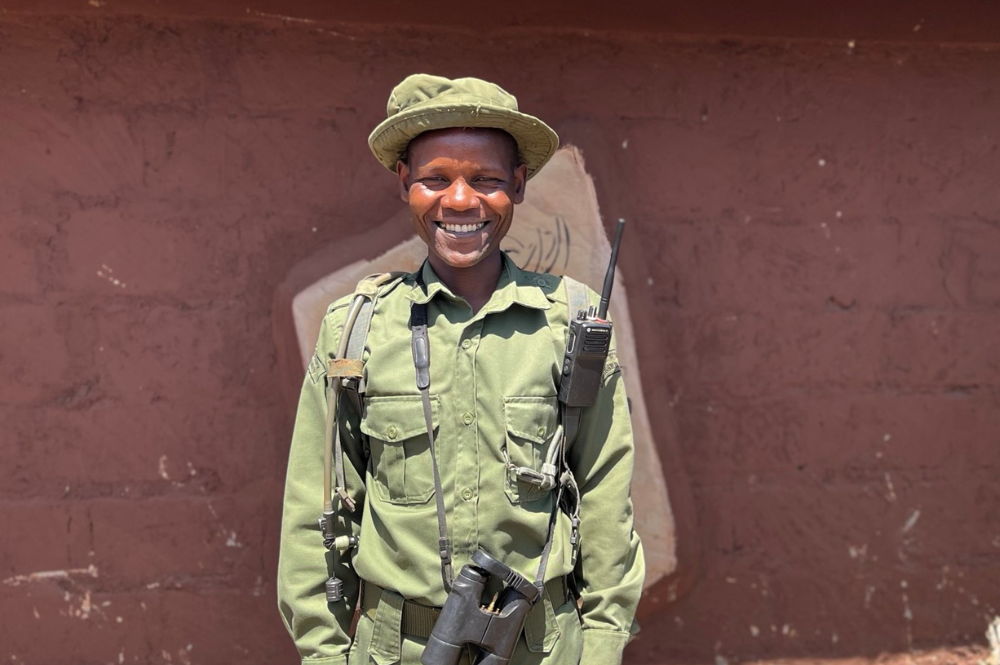This is part three of our three-part blog series on Project UPTICK. Read the second blog here.
After a successful first two years, Project UPTICK’s Partners were eager to continue and even expand into new areas from 2022. The original Conservancies (Lewa Wildlife, Borana and Ol Jogi) remained on board, having been joined by Project newcomer Ol Pejeta. Together, the four comprise a total of 239,000 acres of suitable rhino habitat within Kenya’s Ewaso-Nyiro ecosystem. Furthermore, on top of the existing national parks, additional sites under the management of the Kenya Wildlife Service (KWS) were included in the mix: Amboseli, Ruma and Mount Kenya National Parks, Ngulia Rhino Sanctuary and Shimba Hills National Reserve. The aim of the Project remained much the same as before: to reduce poaching to a level that won’t prevent the achievement of Kenya’s Black Rhino Recovery and Action Plan 2022-26’s target: a net growth of at least 5% per annum.
News of the successful application to the US Government’s Bureau of International Narcotics and Law Enforcement Affairs (INL) was received, with a further US $1,692,809.04 in funding secured for Years 3 and 4.
With a slightly reduced budget, aerial surveillance and the procurement of additional uniforms for the Conservancies’ ranger teams did not continue, whilst other activities, such as new digital radios for Lewa, had already been completed. Other activities, including the installation and maintenance of various hard- and software necessary to operate EarthRanger™ and rangers’ training courses, were continued and/or expanded.
In 2019, prior to the initiation of this Project, the KWS had decided to utilise EarthRanger™ as its main management tool. A software platform (known as a Domain Awareness System (DAS) and developed by Vulcan Technology), EarthRanger™ collects data about the locations of specific activities in an area (a target species to protect, rangers’ routes, sites of potential poaching incursions etc.), collating this information into a real-time visualisation of the area in question (imagine a very detailed map with a live feed). This enables management to quickly analyse, assess and address potential threats.
In Years 3 and 4, Project UPTICK went a step further to integrate EarthRanger™ with other software, including LoRa WAN, a low-power, wide-area networking tool, vital to communicate small amounts of data over vast areas. Ol Pejeta and Lewa had implemented this integration already, while Ol Jogi and Borana received INL’s support to do so.
As for the KWS sites, most had already been trained in the use of EarthRanger™ technology by 51 Degrees Ltd during the first two years of Project UPTICK, including all eight regional headquarters as well as the KWS HQ in Nairobi, and Tsavo West, Tsavo East, Lake Nakuru, Aberdare and Meru National Parks.
KWS now embraces this novel technology fully and there is a great push to see EarthRanger™ deployed throughout all of Kenya’s national parks. Under UPTICK, Shimba Hills was the only target site where the operational infrastructure was unable to be installed in time. The Reserve does not currently have rhinos of its own, but it remains an important protected area, home to the country’s last population of Eastern sable antelope.
Having installed the relevant infrastructure and software, 51 Degrees continued to support the various sites through refresher and other training courses to ensure the utilisation of EarthRanger™ remains as effective as it can be.
But these training sessions were far from the only forms of training on offer. Away from Operation Rooms, out in the bush, 51 Degrees has been working with ranger teams on an extensive array of quality training courses, from medical to scenario-based poaching simulations involving the aerial support and K9 Units. Training rangers from each Conservancy to ensure the same standards and protocols is particularly important as the teams must be able to be deployed to any of the sites in the event of an emergency.
These courses have boosted the confidence and competence of both the individual rangers and entire units. Jamie Gaymer, Conservation Manager at Ol Jogi Conservancy and Chair of the Association of Private and community Land Rhino Sanctuaries (APLRS) detailed the importance of INL’s support:
“During the past four years, the INL grants have been instrumental in advancing security at Ol Jogi, enabling us to enhance our law-enforcement capabilities, integrate advanced technologies, and establish critical partnerships. These efforts have significantly improved our ability to protect wildlife and promote conservation in the region. Whilst the support from INL has effectively elevated Ol Jogi’s capacity, the maintenance of systems, standards and operational capacity will be challenging without INL support. As rhino range expansion ensues, it is paramount that we maintain and expand such capacity in order to effectively mitigate regional crime and prevent poaching.”
Whilst thorough sweeps of the Conservancies have revealed the occasional discoveries of snares, bushmeat, and poisoned arrows and machetes stashed away, the horns and ivory tusks of high-value species such as rhinos and elephants were – thankfully – found only on animals that had died of natural causes. During the four years of Project UPTICK, no rhinos or elephants were lost to poaching, making 2019 the last time that a rhino was illegally killed on any of the Project’s four private Conservancies.
Whilst the threat from poaching is largely under control at present, there remain other threats to the success of rhino recovery in Kenya: drought and the seemingly paradoxical threat of too many rhinos for the habitats available. Identifying additional secure habitats is critical to ensure the continued growth of the country’s black rhino population.
Standardising and enhancing security across key rhino sites and protected areas throughout the country is instrumental to this. Not only has it ensured the protection of rhinos in their existing homes to enable population growth and, in turn, necessitated expansion, but it has enabled knowledge to be gained and best practice shared between teams, boosting security for rhinos in their current and ‘soon-to-be’ habitats.
Last year, as part of the Kenya Rhino Range Expansion (KRRE) initiative, Loisaba Conservancy received 21 black rhinos from Nairobi National Park, Ol Pejeta and Lewa Wildlife Conservancies – all of which were UPTICK beneficiaries.
Excitingly, in October, one of the translocated rhinos gave birth to her first calf. This calf will hopefully be the first of many born on Loisaba. As with this new calf, many of the rhinos selected to be moved will be descendants of the very animals protected thanks to Project UPTICK.








